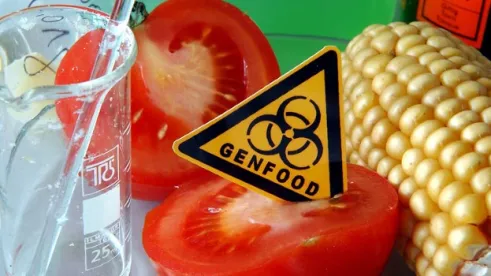As the food industry is well aware, legislation requiring labeling of genetically modified (GM) foods was signed into law on July 29, 2016. The National Bioengineered Food Disclosure Law directs the U.S. Department of Agriculture (USDA) to develop regulations and standards to create mandatory disclosure requirements for bio-engineered foods by July 2018. Under the new law, food companies would have three options to disclose GM ingredients: the use of on-package text, a USDA-created symbol, or an internet link - i.e., a QR code printed on the package that directs customers to GM information.
On June 28, 2017, USDA's Agricultural Marketing Service (AMS) posted a list of 30 questions to obtain stakeholder input to facilitate the drafting of mandatory disclosure requirements. The questions - which are certain to generate significant comments from industry and consumer advocates alike - can generally be divided into five broad categories: (1) Terminology, (2) Definitions, (3) Disclosures, (4) Exemptions, and (5) Compliance. Notable questions follow below.
Terminology
-
What terms AMS should consider interchangeable with bioengineering, and what amount of a bioengineered substance present in a food should make it be considered bioengineered?
-
What breeding techniques should AMS consider to meet the definition of "conventional breeding"?
Definitions
-
Should a bioengineered food include highly refined products such as oils or sugars derived from crops, or what amount of a bioengineered substance would make a food be deemed "bioengineered"?
-
How should AMS define "very small" or "small packages" for purposes of special provisions on disclosure?
-
How should AMS define which retail food establishments are "similar" to restaurants; and what types of records should be required for compliance purposes?
Disclosures
-
What is the amount of a bioengineered substance present in a food that should make it be considered bioengineered and hence subject to disclosure?
-
How should disclosures be made for bulk, vending machine, and online purchases?
-
If a manufacturer chooses to use text or a symbol to disclose a bioengineered food, what text or symbol should AMS require for the disclosure?
Exemptions
-
What types of modifications should be exempt from disclosure?
-
How should AMS craft language in the rule acknowledging that animals consuming bioengineered feed are exempt from the disclosure requirements as bioengineered solely because they fed on bioengineered feed?
Compliance
-
What types of records would establish regulatory compliance with the forthcoming bioengineered food disclosure rule?
-
What are appropriate adjudication procedures for audits and compliance actions?
In general, many of the questions are open-ended and effectively provides industry with the opportunity to shape the forthcoming proposed rule on the federal bioengineered food disclosure requirements. As USDA begins accepting stakeholder feedback on these questions, the Agency is concurrently completing a study examining the challenges of GM disclosure through a smartphone-scannable digital code for both consumers and retailers which could potentially reignite controversy regarding the best way to inform consumers about GM ingredients.
Looking ahead, USDA officials remain optimistic that the Agency continues to be on track to meet the July 2018 deadline to publish a final rule as mandated under the National Bioengineered Food Disclosure Law. Presumably, the current request for stakeholder feedback is part of the Agency's efforts to meet this deadline by soliciting feedback on the issues they anticipate will be the most contentious in the course of the formal rulemaking process.
An exceedingly short time frame - roughly three weeks - has been provided for stakeholders to submit comments to USDA's 30 questions. Responses to the questions should be submitted to GMOlabeling@ams.usda.gov by July 17, 2017.




 />i
/>i

